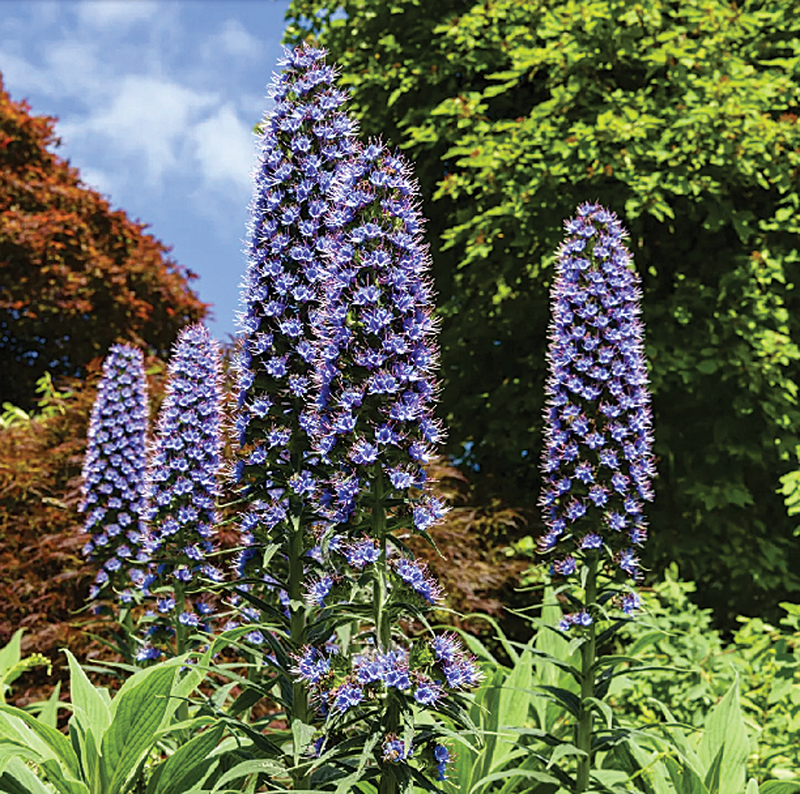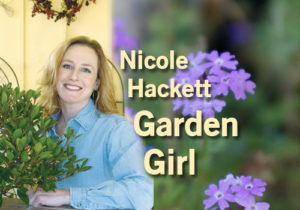Install these drought-tolerant plants this fall

 CLAYTON, CA (Oct. 27, 2022) — Fall is the season for updating landscape areas and installing foundation plants.
CLAYTON, CA (Oct. 27, 2022) — Fall is the season for updating landscape areas and installing foundation plants.
Our temperatures are perfect for planting; warm days and cool nights make for happy installations.
Folks have started to trickle into the nursery seeking shrubs, trees, groundcovers and ornamental grasses that need less water to thrive, and can tolerate heat, occasional drying winds and lots of sun. California natives along with Australian and Mediterranean plants have consistently proven they can take all that our environment has to dish out.
Try manzanita or echium
Manzanita is a recognizable native for our landscapes. Howard McMinn creates a hardy hedge along a property line, or plant in a series on a hillside. Reaching 3-4 feet tall and 5-6 feet wide, this shrub is exceptional. The bark is dark crimson, and the white flowers of spring contrast nicely along its branches.
Echium is a large, dramatic California native shrub that makes a specimen planting. Palmate style, grayish-green leaves cover this round shrub. Commonly called Pride of Madeira, echium will reach at least 6 feet tall and 6-8 feet wide. During spring, stalks of purple flowers point toward the sky. The stalks are made up of hundreds of star-shaped flowers, and honeybees love this plant.
Verbena lilacina de la Mina and Salvia Winnifred Gilman are great accessory native installations. They are sturdy, heavy bloomers to consider if you’re planting native. Carex pansa and Carex divulsa are native ornamental grasses that thrive in our local landscapes.
Plants from Down Under

Tough as nails in our extremes, Australian plants are interesting and need little to keep them happy. Most people adore Grevillea, which is a huge family of Australian plants. To keep things short, I will mention Grevillea Coastal Gem and Grevillea Long John.
Coastal Gem is an evergreen groundcover. Twisting branches grow from the center out, almost looking like tentacles. Small, grayish-green leaves line the arms, and dark salmon-colored blossoms appear fall through spring.
Long John has a thin leaf that looks like a pine with reddish bark. This evergreen will grow 12 feet tall and 8 feet wide. You’ll find red clusters of flowers sprinkled along this focal planting from mid-fall through late spring.
Acacia Cousin Itt is a patented evergreen that grows just as you’d expect it from its name. This shrub doesn’t bloom, but the foliage is lush and green. It is hard to believe that it needs so little water to be so happy.
Other honorable mentions for Australian plants are Kangaroo Paws, Correa, Westringia and Mahonia. All excellent.
Rethinking oleander
Some of our favorite Mediterranean plants are also superior in Clayton Valley landscapes. It’s surprising how many there are.
Oleander used to be a dirty word in the nursery, but now folks are seeking this evergreen out. Its attributes are that it keeps its leaves, blooms all summer, has dwarf varieties, and is both deer- and gopher-resistant. Aside from being poisonous, it’s relatively perfect.
Lavender and rosemary both come our way via the Mediterranean. Fruitless olive trees and bushes also make great focal installations in a landscape. Try euphorbia plants for nice sub shrub additions. With so many colors of foliage, there’s a contrast plant for any other installation.
This is the time to get going and make changes in your landscape. There are many fabulous choices that are great for our environment – more than one can mention in a single column.
Email Nicole Hackett at gardengirl94517@yahoo.com

Nicole Hackett
Nicole is the Garden Girl at R&M Pool, Patio, Gifts and Garden. You can contact her with questions or comments by email at gardengirl94517@yahoo.com
